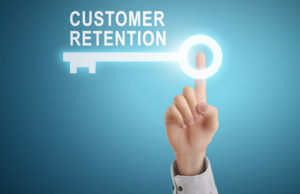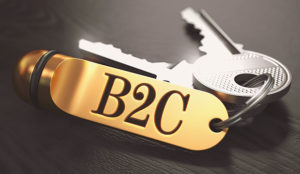
For several years now CRM vendors have been touting their customer satisfaction scores as a way to claim an advantage over their competitors. But for just as long we have watched as a trend emerged showing company after company changing their CRM brand. Changing CRM vendors is not a trivial process. It involves a good deal of work, not to mention a write-off of the previous CRM investment, although a great deal of the learning from the first experience goes into helping make the second implementation a success.
The issue of switching is not limited to CRM. If you own a cell phone you are familiar with switching plans and the inducements that make it hard to resist. Perhaps you have even felt stupid for being loyal and paying higher prices than those offered to new customers. Back when cell phones needed cars to carry them around, I would sign up with whatever carrier the car dealer recommended, even though that meant getting another new phone number. But that was a long time ago, before handheld models and prestige area codes.
New Walker Study
Switching, loyalty and satisfaction are all closely related, and perhaps for that reason the important differences between them are overlooked. Are satisfied customers loyal and vice versa? Which quality is better? How can you tell the difference? These are far from idle questions, as the simple examples above show. Loyal customers are more profitable customers. Companies that amass customer loyalty are also those with the healthiest operating margins, according to a new report by Walker Information.
Walker Information is a 70-year-old, family-owned and -operated company based in Indianapolis that has spent three generations studying loyalty and advising its customers about it. In September Walker reported the results of a study of the information technology industry that should be must reading throughout vendor organizations.
For its study Walker studied five major sectors in the IT industry — Computer Software, IT Services, Networking Equipment, Servers and Workstations, and Storage Systems and 13,100 brand evaluations were completed by 4,877 respondents.
Loyalty and Satisfaction
Walker’s study distinguishes between the “truly loyal,” who both want and plan to maintain their vendor relationship; “trapped” customers, who are likely to continue doing business with a company but are not pleased with the relationship; “high risk” customers, who are unhappy and who have little intention of continuing a vendor relationship; and “accessible” customers, who are committed to the relationship but are not making additional purchases.
What Walker found was that despite the fact that 84 percent of the survey population said they were very satisfied or satisfied, only 44 percent are truly loyal to their IT suppliers. A very large percentage (30 percent) is classified as trapped: They might be likely to buy more but their commitment to the relationship is weak. Meanwhile, 23 percent say their hand is on the ripcord — their commitment to the relationship is low and they intend to look elsewhere. Lastly, 3 percent is categorized as accessible.
Operating Margins
So how do you like them apples? More than eight in ten are satisfied but less than half feel any loyalty. You could say, “So what. It’s the revenue that tells the story, and satisfied customers buy.” But that’s not what the data shows. As a matter of fact, it’s just the opposite.
Truly loyal customers generate greater operating margins. According to Walker, companies with high customer loyalty generate an average operating margin of 12 percent, while companies in “loyalty limbo” generate average operating margins of only half that. But most significantly, the “loyalty laggards” generate an average operating margin of negative 11 percent. In other words it costs them money to have disloyal customers.
What It Means for IT
Of the five segments surveyed, computer software fared best, with a 48 percent loyalty rating and an 18 percent high risk rating. But lest you think software is on easy street, it is also the second highest sector when it comes to customers feeling trapped (30 percent).
For a long time CRM has been positioned as a tool for saving and making money, and that’s fine. But what the Walker report appears to be saying is that there are many ways to those goals. Earlier this year I pointed out some of the shortcomings of the prevailing business model highlighted by Shoshana Zuboff in The Support Economy. And recently The Economist highlighted the importance of making technology products more usable by hiding their complexity from users.Customer attitudes are often shaped by things tangential to a product or service, such as pricing and delivery or the elusive “ease of use.” Walker Information has shown us that more than being tangential or secondary, every impression made by tangential issues has a cumulative effect that lasts and forms the composite we call loyalty.
This is a very interesting and highly readable report that gets to the heart of the theory behind CRM. Best of all, it’s free for the asking.
Denis Pombriant is former vice president and managing director of Aberdeen Group’s CRM practice and founder and managing principal of Beagle Research Group. In 2003, CRM Magazine named Pombriant one of the most influential executives in the CRM industry.























































